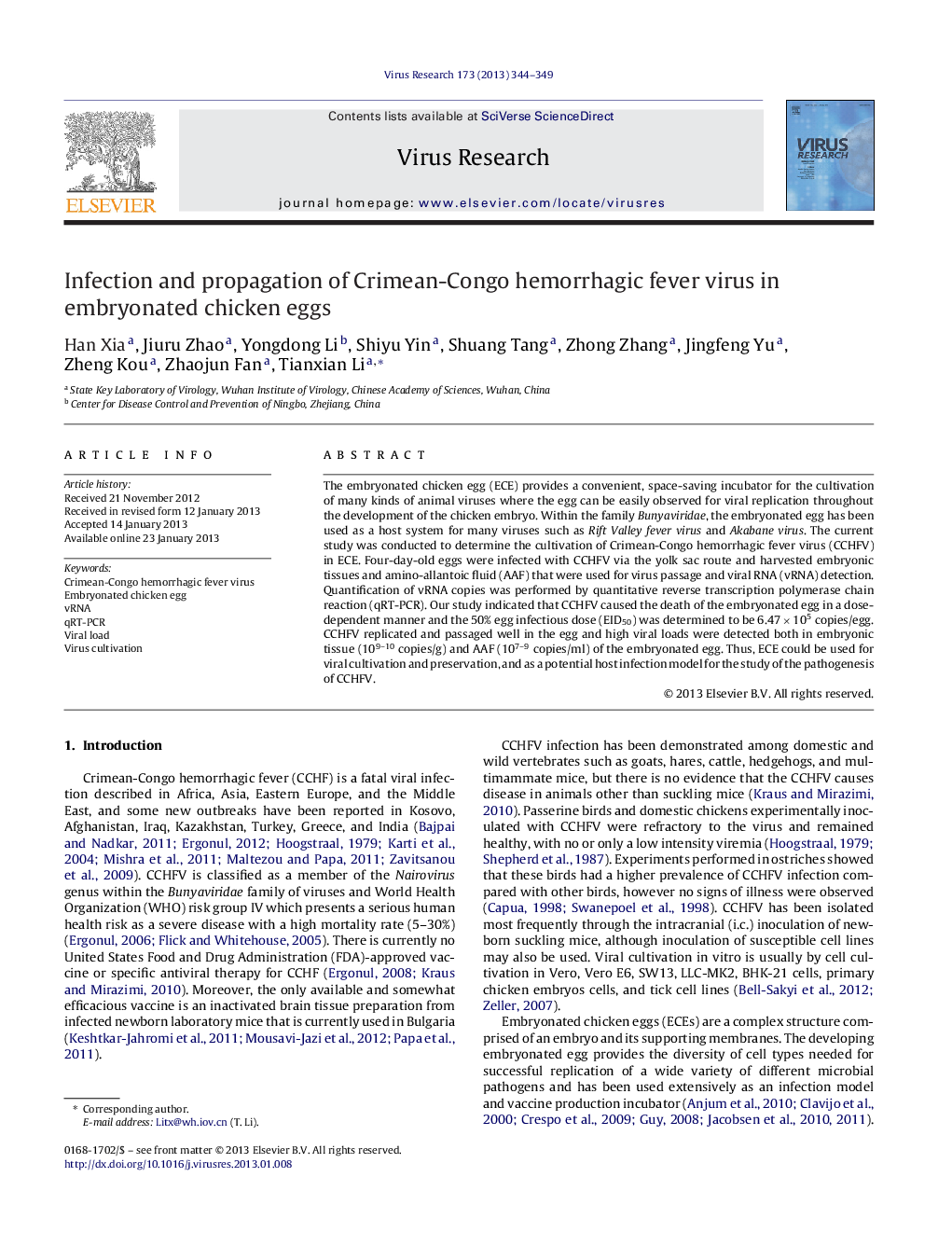| Article ID | Journal | Published Year | Pages | File Type |
|---|---|---|---|---|
| 3428693 | Virus Research | 2013 | 6 Pages |
The embryonated chicken egg (ECE) provides a convenient, space-saving incubator for the cultivation of many kinds of animal viruses where the egg can be easily observed for viral replication throughout the development of the chicken embryo. Within the family Bunyaviridae, the embryonated egg has been used as a host system for many viruses such as Rift Valley fever virus and Akabane virus. The current study was conducted to determine the cultivation of Crimean-Congo hemorrhagic fever virus (CCHFV) in ECE. Four-day-old eggs were infected with CCHFV via the yolk sac route and harvested embryonic tissues and amino-allantoic fluid (AAF) that were used for virus passage and viral RNA (vRNA) detection. Quantification of vRNA copies was performed by quantitative reverse transcription polymerase chain reaction (qRT-PCR). Our study indicated that CCHFV caused the death of the embryonated egg in a dose-dependent manner and the 50% egg infectious dose (EID50) was determined to be 6.47 × 105 copies/egg. CCHFV replicated and passaged well in the egg and high viral loads were detected both in embryonic tissue (109–10 copies/g) and AAF (107–9 copies/ml) of the embryonated egg. Thus, ECE could be used for viral cultivation and preservation, and as a potential host infection model for the study of the pathogenesis of CCHFV.
► We conducted the experimental infection of embryonated chicken eggs (ECEs) with CCHFV. ► Four-day-old ECEs were susceptible to CCHFV via the yolk sack inoculation route. ► CCHFV replicated extensively in the ECE and high viral loads could be detected. ► ECE will be useful as an infective vector for CCHFV cultivation.
